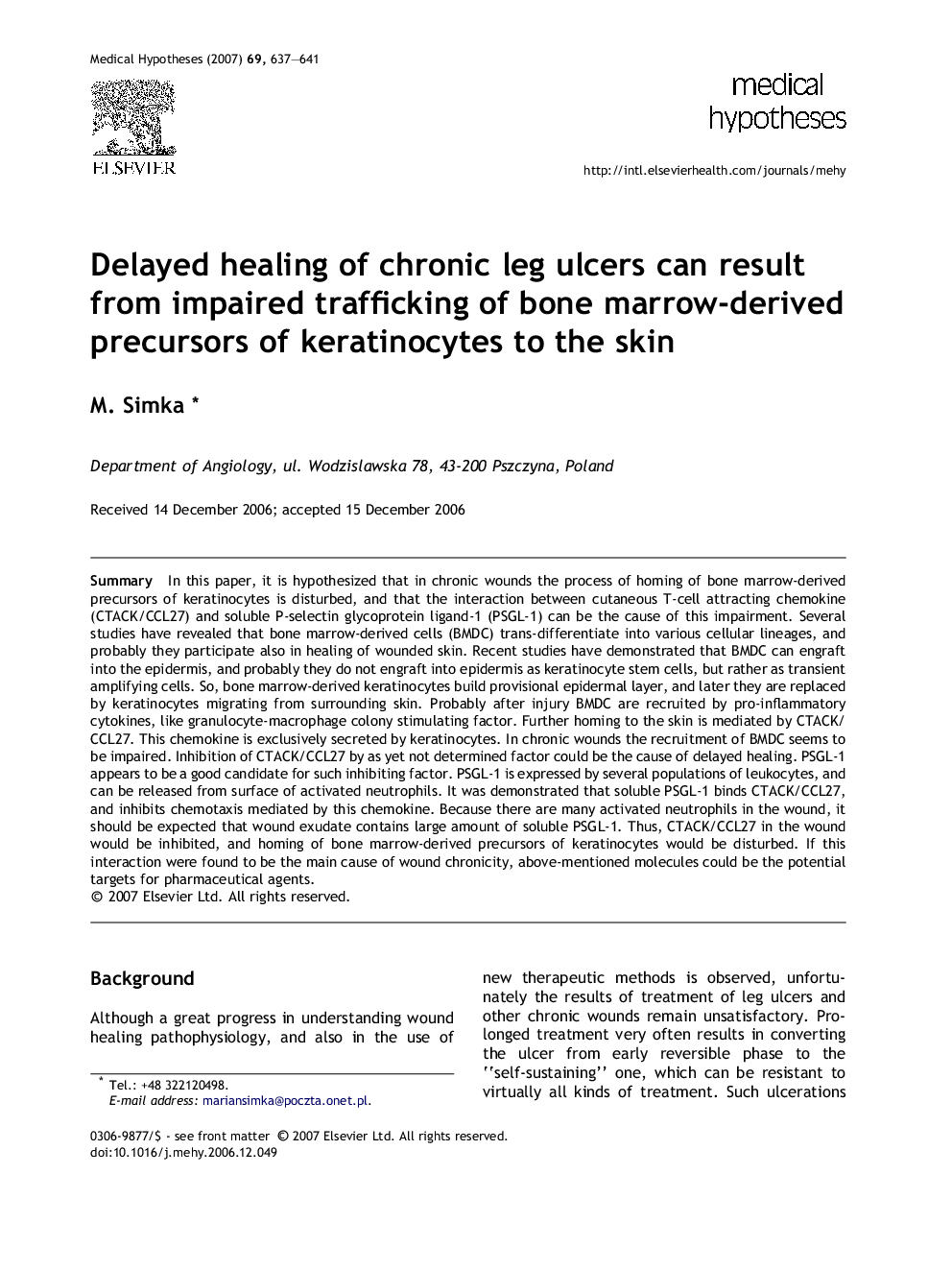| Article ID | Journal | Published Year | Pages | File Type |
|---|---|---|---|---|
| 2492406 | Medical Hypotheses | 2007 | 5 Pages |
SummaryIn this paper, it is hypothesized that in chronic wounds the process of homing of bone marrow-derived precursors of keratinocytes is disturbed, and that the interaction between cutaneous T-cell attracting chemokine (CTACK/CCL27) and soluble P-selectin glycoprotein ligand-1 (PSGL-1) can be the cause of this impairment. Several studies have revealed that bone marrow-derived cells (BMDC) trans-differentiate into various cellular lineages, and probably they participate also in healing of wounded skin. Recent studies have demonstrated that BMDC can engraft into the epidermis, and probably they do not engraft into epidermis as keratinocyte stem cells, but rather as transient amplifying cells. So, bone marrow-derived keratinocytes build provisional epidermal layer, and later they are replaced by keratinocytes migrating from surrounding skin. Probably after injury BMDC are recruited by pro-inflammatory cytokines, like granulocyte-macrophage colony stimulating factor. Further homing to the skin is mediated by CTACK/CCL27. This chemokine is exclusively secreted by keratinocytes. In chronic wounds the recruitment of BMDC seems to be impaired. Inhibition of CTACK/CCL27 by as yet not determined factor could be the cause of delayed healing. PSGL-1 appears to be a good candidate for such inhibiting factor. PSGL-1 is expressed by several populations of leukocytes, and can be released from surface of activated neutrophils. It was demonstrated that soluble PSGL-1 binds CTACK/CCL27, and inhibits chemotaxis mediated by this chemokine. Because there are many activated neutrophils in the wound, it should be expected that wound exudate contains large amount of soluble PSGL-1. Thus, CTACK/CCL27 in the wound would be inhibited, and homing of bone marrow-derived precursors of keratinocytes would be disturbed. If this interaction were found to be the main cause of wound chronicity, above-mentioned molecules could be the potential targets for pharmaceutical agents.
